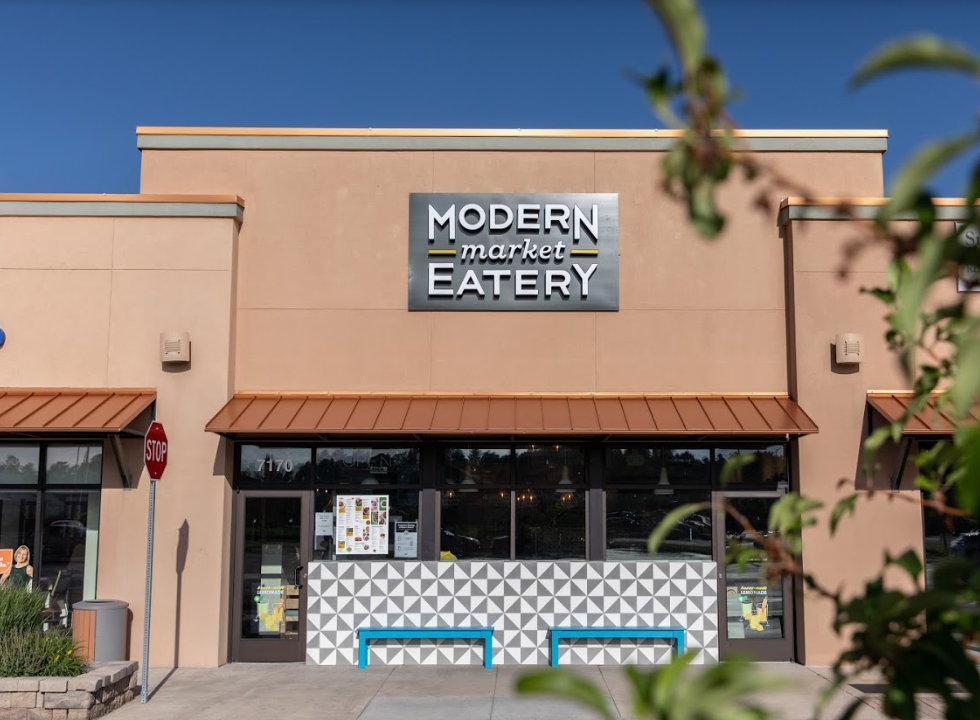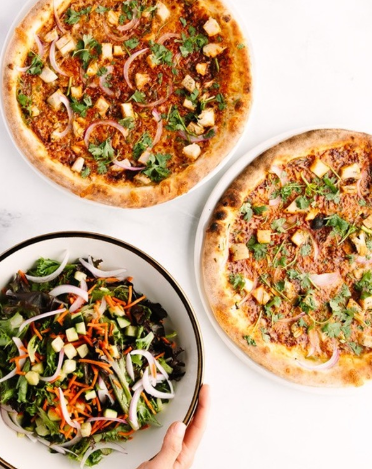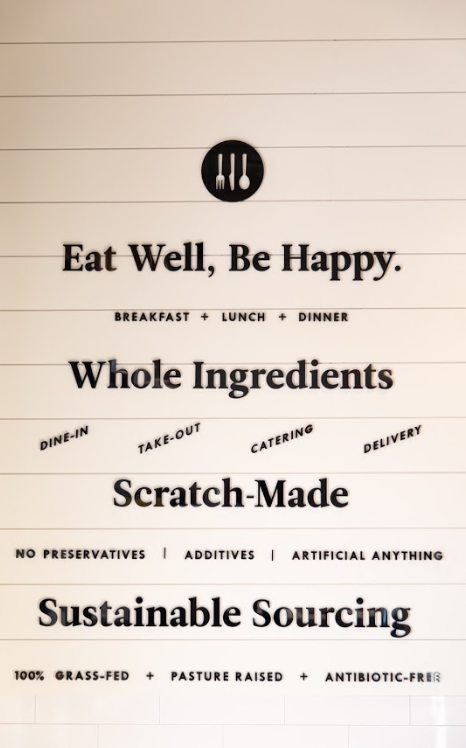
Necessity is the mother of invention. Brands that turn challenges into opportunities come out as winners. Modern Market is an excellent example of a company that’s confronting coronavirus difficulties with innovation.
I had the opportunity to speak with Anthony Pigliacampo, co-founder of Modern Market who shared how they have leveraged innovation to disrupt the restaurant industry and provide critical support during COVID-19.
Simon Mainwaring: Tell us about the Modern Market?
Anthony Pigliacampo: It’s a restaurant I co-founded 11 years ago. I’m an engineer and product designer by training. I worked at IDEO, a large consulting firm. While I was there, I did some work for McDonald’s. I have nothing bad to say about McDonald’s but I became fascinated with the amount of energy they put into producing burgers and fries. As I traveled the world with them, I saw that that was kind of America’s global legacy. I thought, ‘What if you put that same amount of effort into making people eat food that was good for them?’
At the time, restaurants weren’t doing that. We were going into an era where people eat out all of the time. You can’t eat burgers and fries for every meal. We tried to invent a restaurant where you could eat there every day and do good for your health, the planet and your community.
We set the task for ourselves to make money serving healthy food. Eleven years later we’ve got a restaurant platform called Modern Restaurant Concepts with two brands, Modern Market Eatery and Lemonade, and about 55 restaurants.
SM: What informed your focus on health and wellness? Was there a purpose or mission statement?
AP: We’re focused on making better food available everywhere. I asked, ‘Why is it easy to find food that’s bad for you and hard to find food that’s good for your body?’ Give people the choice between good and bad, good will win. But, you have to make it affordable and accessible.
I wanted to honestly say that what my business does every day to make money does good for the world. We pay our employees a living wage. We’ve changed our supply chains. We introduced hormone and antibiotic-free chicken into Dallas. We created demand, which then created the supply. That made the supply chain more sustainable. It’s a purpose-driven brand. We exist to make the world better.
SM: How do you make money from healthy food? Is it a question of margins?
AP: It’s innovation through managing complexity. The more complex something is, the harder it is to scale. Making food from scratch is complex relative to throwing a patty on a grill.
We’re continually pushing and iterating because we need it to get to that level where the economics match burgers and fries. People don’t often consider that capital is agnostic if the money flows to where the return is. If we match burgers and fries and we create this amazing product, we’re going to win that game and get scale.
SM: The good news is there are more healthy alternatives out there. How do you compete?
AP: At some point, everybody will have clean ingredients, even McDonald’s, which is awesome. Our goal is to keep advancing the table stakes of quality.
How do you do that in a fast food format? How do you replicate high-end culinary techniques? We’re working on that with our employees and technology.
SM: How do you infuse customers and employees with the passion for quality products?
AP: It starts with great ingredients. The real magic comes in engineering the products. We can have someone put chicken in the oven and this amazing product comes out. A computer-controlled algorithm does the cooking. It’s cooked from scratch in the restaurant, right before you order it. That wasn’t possible 15 years ago. We’re leveraging those types of technology. We’re also leveraging the data of what people are ordering to determine what to prepare.
SM: How do you use technology to tell your team to prepare it from scratch when it’s ordered?

AP: Our job is to take somebody off the street with zero cooking experience and train them to make any of our recipes within a shift. We think about it from a process standpoint. Fast food does an amazing job, they’ve got it down to a science. We’ve done that from scratch. We’re breaking down high end techniques into 10 steps. What equipment do we need to do five of those steps? How do we have a training guide and a video that someone can watch to learn the other three?
SM: What did you guys do when COVID-19 came along?
AP: We took a short term hit with everybody staying home and not ordering food. Our sales dropped by about 50%. We were fortunate that we made a big investment in digital ordering technology over the last year. So we doubled down on getting food into people’s hands as efficiently as possible.
We rolled out a series of new products in our to-go business. There was that two month period when it was difficult to get groceries delivered. We use our website to deliver curated grocery boxes.
We launched meal kits and products in bulk. You can buy food for a few days with one delivery. We actually had three restaurants setting sales records during COVID-19.
Our re-Fresh Box includes amazing fresh vegetables. We asked ourselves, ‘If I have to cook for my family for the week, what vegetables are going to hold?
One of the things we had most success with was selling raw proteins. We have high quality grass-fed beef and line caught salmon. This stuff is crazy expensive at Whole Foods but we get an amazing price on it because we’re buying in bulk. We started packaging and selling that through our website at about half the price you’d pay at the grocery store. That was a great win for our supply chain to move more products. It was also a win for our guests.
SM: How has the pandemic impacted your business for the long term?
AP: We’re going to keep these products on our menu. Delivery has always been the domain of food that’s not good for you. The pandemic changed the thinking about that. Delivery is becoming a necessity. I can actually order a mix of salads, healthy bowls and high quality cooked proteins to my door.
We were transitioning to digital ordering and delivery. In two months, we got five years of growth in that segment. We’ll hang onto a lot of that business. When dining rooms are back to full capacity, we’ll have a richer mosaic of ways to bring food to our guests.
SM: What social givebacks are you doing during the pandemic?
AP: We give 50% discounts for anyone in need or buying food for anyone in need. We’ve had guests buy food for an entire nursing home. We give them 50% or sometimes even deeper discounts. We put up the labor and get this food out there to police stations, hospital staff and healthcare workers. We’ve had great success with those programs.
SM: How do you tell that story?
AP: We shared it through our social media accounts. To be honest, we furloughed a large portion of our above restaurant team during all of this. We didn’t have the resources to tell it well. It didn’t really matter to me if we got credit for it. It was the right thing to do. Our profitability has tumbled, so keeping resources available to just run all the restaurants has been a challenge.
SM: What have you worked through that other businesses can learn from?
AP: One of the bigger challenges was getting guests to realize that restaurants are safe. We’ve solved that through changes in our packaging. We had taken an eco approach to packaging. A reduction in packaging makes it difficult to know if somebody tampered with it. It’s caused us to think about how to create packaging with environmental sustainability and sanitation in mind.
Another challenge we face is keeping our team members safe. We screen employees’ temperature when they clock in. Every establishment has strict protocols on mask wearing and sanitation. A lot of those procedures have only upped our game in terms of cleanliness. We’ll keep those forever.
Once this passes, I hope the next challenge is getting people to be comfortable coming back into dining rooms. We’re rolling out a technology that allows you to place your order on your phone. It makes it easy to have food brought to your table with no interaction. Those are good things for us long term. COVID-19 forced us to develop the technology and features faster.
SM: What would you say to brands that aren’t investing in purpose as they are just trying to survive?
AP: Fight for what you believe in. This is the time to do more good. The brands that aren’t going to survive are ones that don’t have a purpose beyond profitability. Our purpose helps us motivate investors, guests and employees. People know we’re integral in making their communities healthier.
SM: What’s your vision for business as you look forward?
AP: I believe business is the number one force of change in society. If we can continue to stimulate demand for things that do good, the world will be better off.

There’s a massive business opportunity on the backside of this whole COVID-19 craziness. More people are realizing that we’ve got to make better choices. Brands that offer products that allow consumers to make a good choice are going to succeed.
SM: Are you trying to change the restaurant industry in some ways?
AP: We’re educating guests that restaurants are safe. We spent most of our marketing muscle on supporting restaurants. We’re a cash business. We can’t sit idle for three months. People need jobs. We had a lot of guest feedback and success with it.
SM: What is your long term vision?
AP: We take a long term view. Our overarching goal is to make healthy, high quality food as ubiquitous as clean water. We make every decision through the lense of effectively scaling while achieving our mission of healthy, higher quality food.
Simon Mainwaring: Why are you optimistic right now?
Anthony Pigliacampo: I believe humans have an innate desire to make things better. A lot of companies I see and admire are working to change because better wins.
People are becoming aware of issues and taking action. All the turmoil right now is going to lead to a better society, a better environment and a healthier population. Those things will make tomorrow better than today.

